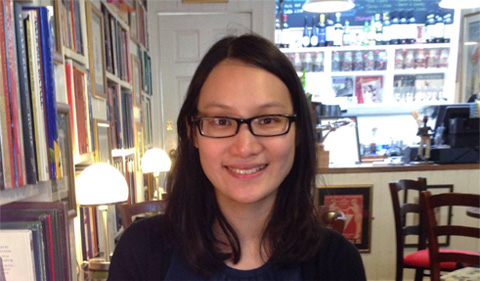
Dr. Victoria Lee, Assistant Professor of History, presented a paper titled “Wild Toxicity, Cultivated Safety: Aflatoxin and Kōji Classification” as part of a Princeton University invitation-only workshop in March.
Organized under the rubric of “Risk on the Table: Food, Health, and Environmental Exposures,” the workshop examined the confluence of hazards and concerns that characterize the preoccupation with risk in food, focusing in particular on two issues: (1) the impact of industrialization on the nature of food—and how it was perceived, and (2) the changing modes of identifying and objectifying dangers, particularly from the sciences of nutrition and toxicology. The workshop was co-sponsored by Princeton University’s Program in History of Science and Shelby Collum Davis Center for Historical Research.
Lee’s paper traces the history of Japanese scientific narratives about the evolution of kōji mold varieties—widely used in the Japanese brewing industries to make sake, soy sauce, and miso—as domesticated non-toxigenic species distinct from their wild toxigenic relatives. The latter were found to produce aflatoxin, which was discovered in the 1960s to be a serious cacinogenic hazard in food.
Abstract: In 1960, over 100,000 poultry in England died from an unknown disease named Turkey X. Investigators linked the disease to peanut meal in the turkeys’ industrial feed and identified the cause as a toxin produced by the fungus Aspergillus flavus. Following the Turkey X outbreak, “aflatoxin” emerged as a powerful carcinogen, which especially damaged the liver and clearly affected numerous animal species including trout and rats. New anxieties highlighted aflatoxin—produced as the mold grew on nuts and grains during storage—as a serious potential hazard to humans, including people who either consumed affected animals, or ingested aflatoxin directly in their own food, perhaps in the course of eating a diet indigenous to particular regions. As part of the research after 1960 to understand the risks posed by aflatoxin, mycologists focused on distinguishing molds within the Aspergillus flavus taxonomic group that were toxigenic from those that were not, a difficult task because the A. flavus group included a large number of microbial isolates. Among them were the varieties known as kōji, which were widely used in the Japanese brewing industries to make sake, soy sauce, and miso. Consequently, Japanese scientists attempted to establish kōji varieties as a distinct group from A. flavus, constructing an evolutionary narrative in which human cultivation had created a non-toxigenic, domesticated species different than its toxigenic wild relative. By tracing their work, this paper explores the ways in which classificatory practices and the perception of risk in food defined and shaped each other.
For more on Lee’s teaching and research interests, visit her History Department profile.


















Comments